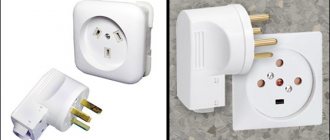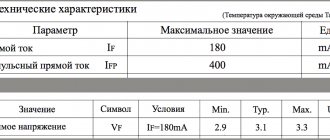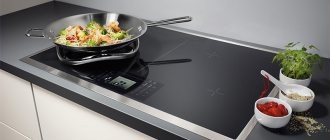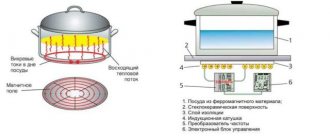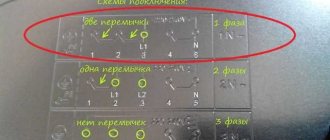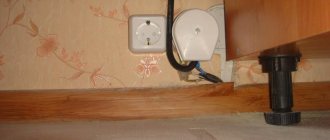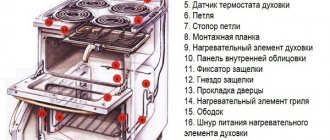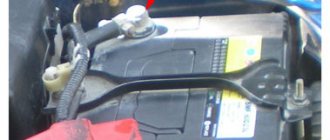Connecting a combined gas stove to electricity
Currently, almost all gas furnaces require an electrical connection, regardless of whether they are combined or not. Many models are equipped with an auto-ignition system, oven lighting, and grill mode—all of which require electricity. We will consider below how to connect a combined gas stove to electricity in a five-story or any other house.
To make the connection, you must consider the following nuances:
- The network must be old and in good condition. Household appliances create a lot of stress, and damaged wires or crooked wiring can lead to an accident.
- If power surges are often observed in your home, then you should choose a stove taking this fact into account. Now on the market there are models with a built-in fuse for such a case.
- A separate power line from the panel must be laid for the furnace. For such work, a 3 * 1.5 cable is suitable (in some cases it is worth giving preference to 3 * 5) and a 16 A RCD.
Before connecting, you must position the device correctly. To do this, the following conditions must be met:
– the presence of an exhaust hood or sufficient natural ventilation in the room;
– the distance between the gas pipe and the stove should ideally be no more than 1.5 m; up to 4 m is allowed;
– it is necessary to install a grounded socket.
Which outlet to choose for the hob and/or oven
It all depends on the characteristics of the technology. Hobs and ovens come in both single-phase and three-phase and can have a power from 2.5 to 10 kW.
On a note!
All hobs require a separate disclaimer. In principle, they do not have plugs, and some models may come without a cable included (there are only terminal blocks). Think about it: do you really need an outlet for your hob? It may be more expedient to connect the power cable from the panel directly to the panel terminal blocks, or to connect the cables through a mini panel if the surface is supplied with a cable. In this case, a plug-socket for cooking will not be needed. But you shouldn’t forget about the machine and the RCD; we put them on the electric stove line. How to choose them is described below.
Single-phase connection
(most common)
A “cooker” and/or an oven with a power of up to 3.5 kW is connected to a standard 16 A/220 V outlet. In most cases, the oven has a regular wire and a 16-amp plug (if connected independently), so only an outlet is required. The hob does not have a plug, so you will have to select both a plug and a socket.
For more powerful single-phase models of electric stoves and cabinets from 3.6 to 7 kW
You will need a power socket with characteristics of 32 A/220 V and, if necessary, a special 32A plug.
Three-phase connection
A three-phase hob and/or oven requires a 380 V power supply and a 20 Amp three-phase outlet if the power is not higher than 3.5 kW
or 32 Amps for powerful cooking
from 3.6 to 7 kW
. If the oven and/or hob does not come with a plug, you will also need a 3-phase plug with the appropriate amperage.
Remember.
Plugs and sockets for such equipment must have a grounding contact. That's why they have more pins and holes. Single-phase ones have three (2 feeders and ground), three-phase ones have five (3 feeders, ground and neutral). Connection without grounding is dangerous to life!
Thus, it is impossible to replace special sockets for the hob and oven with models for lighting fixtures and small household appliances.
Article on the topic: How to set the time on an electrolux gas stove
Algorithm for connecting a combined stove in an apartment
If you previously had an electric stove, you will initially need to conclude an agreement for the supply of gas. To do this, you must provide the following documents to the gas service:
- proof of ownership;
- registration certificate for residential premises (apartment);
- certificate of family composition;
- maintenance contract;
- gas meter passport;
- subscriber book.
After successfully signing the contract, the gas service issues a permit allowing the installation of the stove in the apartment. However, independently connecting the stove to the gas pipeline is prohibited at the legislative level . Only specialized organizations that employ workers with confirmed qualifications have the right to carry out such work.
If the gas service notices this violation during an inspection, it will impose a fine and may terminate the gas supply contract. However, you can connect the stove to the gas mains and the electrical network, but not turn it on, but call a specialist who will check all connections and give the go-ahead for connection. This method allows you to save money on services from Gorgaz, but without skills in such work or with a careless approach to this matter, it is better not to get involved.
Important: when connecting independently, all responsibility for accidents falls on the owner of the apartment, who, if an incident occurs, is obliged to pay the victims, including the gas company, for damages.
If you decide to make the connection yourself, then it is better not to deviate from the following algorithm of actions:
- Draw a power line and install a grounded socket near the intended location of the stove.
- Place the stove on a flat surface or adjust the height of the legs using a level. A slanted surface will prevent food from cooking evenly.
- The thread of the flexible hose is wrapped with FUM tape, after which it is connected to the gas pipe and tightened with a wrench.
- The hose is connected to the device in the same way.
- Connecting the device to the power supply. Electricians advise not to do this directly, but only through an outlet.
- Check the tightness of the connections with a thick soapy solution under the supervision of a specialist, thereby making your independent connection legal.
- Check the functionality of the burners and oven.
Important: the hose should not come into contact with the heated surface or the wall, so it is important to install the stove so that it can hang freely.
Connecting any gas equipment yourself is not a safe matter, so it is very important to treat this matter with the utmost care, without neglecting to check each connection. Saving five minutes can be very costly in the future.
The modern household appliances market provides potential buyers with a wide range of gas stoves. One of the popular purchasing options are combined-type models, where, along with a gas resource, an electric one is also used. However, for buyers of such equipment, connecting a gas stove with an electric oven often raises questions. Do you agree?
Indeed, if you study the rules for handling gas and electricity, you can see that they clearly separate the marked resources. Accordingly, the practice of connecting hybrid gas stoves has some peculiarities. Let's consider these issues in more detail, paying attention to installation standards and rules for connecting to electricity and gas supply systems.
Why change?
The replacement is due to several reasons. Let's look at the main ones.
- Redevelopment of an apartment that requires increasing free space. Electric stoves and induction cooktops are often smaller than their gas counterparts. Plus, gas supply pipes are removed from the walls. They are difficult to fit into the kitchen interior, just like massive gas meters. We have to make boxes and other decorative elements so that such details do not spoil the overall picture.
- Many housewives explain the need for such castling by the ease of using an electric stove: modern models have many automatic cooking programs. It is clear that the hassle in the kitchen in this case is significantly reduced.
- The oven causes a lot of complaints about the gas stove: it is difficult to adjust it to the required temperature. However, now more and more combined models are appearing, when gas burners are combined with an electric oven.
Concern for the safety of the apartment: there is no open fire in electric stoves and hobs, you don’t have to worry about a leak and subsequent gas explosion
In addition, such devices do not burn oxygen during operation, which is important in conditions of difficult ventilation
On a note. An induction cooker also runs on electricity, but it differs from a conventional electric household appliance in its operating principle. Induction currents do not heat the surface of the burner, but the dishes standing on it. Such equipment is expensive, but it is economical, heats up quickly, and you cannot get burned on it.
It is worth noting the disadvantages of electric stoves:
Higher price compared to gas analogues. The working surface of electric stoves, made of glass ceramics, requires careful handling. To extend its service life, use dishes with a flat bottom. Gas in houses is rarely turned off, but power outages are quite common, especially if the apartment is located outside the city limits
In this case, it will be impossible to cook anything or even boil water.
Some tend to exaggerate the impact of electromagnetic induction on the human body. In fact, all household appliances, including those in the kitchen, are completely safe for others.
Equipment installation instructions
Theoretically, the user himself can install (place) a gas stove on his own. Moreover, each model of a gas stove purchased officially must be accompanied by a user manual. This document specifically describes all the nuances of installing equipment on site.
It’s a completely different matter when the device is connected directly to the gas and electrical networks. Of those nuances of installing equipment on site that are noted in the documentation, one of the first is to ensure proper ventilation of the room where the hybrid stove is installed.
Next, we will consider how to choose a place for installation, taking into account the requirements and features of leveling the hybrid slab.
Requirements for installing a slab
This type of household appliance can be placed in the opening between the elements of kitchen furniture. In this case, on one side of the stove it is allowed to place a piece of furniture whose height is greater than the height of the gas stove. But, according to the rules, such furniture is placed at a distance of no less than 300 mm from the equipment body.
A piece of furniture placed on the other side of the equipment may be placed provided it is at the same height as the stove. If you plan to install some furniture elements above a gas stove, such installation is possible only if there is no impact on the operating process of the equipment.
Based on the rules, for such cases the minimum permissible vertical distance from the surface with burners is at least 650 mm, and the distance to the hood is at least 75 cm.
Taking into account the same rules for installing equipment locally, certain requirements also apply to pieces of furniture, as well as to walls, partitions, and floors that are located next to heating equipment.
In particular, furniture must have a heat-resistant structure that can withstand heat of 90 °C and above. One thing to take into account is the significant heating of the rear area of the gas stove as the equipment is used.
Optional stand and leveling
Many models of gas combination stoves come complete with a stand. Using a stand slightly increases the overall height (by about 5-10 cm).
The use of the stand is convenient because this piece of equipment is equipped with wheels (two wheels) and adjusting screws (two screws). There are also designs of gas stoves with four adjusting screws.
If it is convenient to move equipment with the help of wheels, then by adjusting the screws the gas stove is easily leveled to the horizon or to the level of the surfaces of the furniture set.
Meanwhile, the stand can be removed if necessary. In this case, the adjusting screws are installed directly on the bottom of the gas stove.
Connection rules and steps
The main rule of installation work aimed at connecting household appliances to gas and electricity supply lines is to involve specialists in this matter - representatives of the gas service, electricians.
It is useful for the user to understand how a gas stove with an electric oven is connected to the networks, but in practice this task should only be solved by specialists - service workers who have the appropriate clearance.
Each model of gas (combined) stove has technical documentation, which indicates the characteristics of the gas and electrical networks for connection.
Accordingly, resource network lines connected to the equipment installation site must comply with the specified technical characteristics of the equipment.
In particular, we mean the following characteristics:
- gas pressure;
- gas type;
- voltage of the electrical network.
The gas combination stove is supplied for sale, configured for use with natural gas “H”, “E”, supplied at a pressure of 13-20 mbar. Or an installation for the use of liquefied gas at a pressure of 20 mbar can be used. This information can usually be seen if you open the oven door, on the upper or lower end of the body.
Stage #1 - connecting the gas line
Like most classic models, the combined design of the gas stove is equipped with an R ½ nozzle (extended threaded tube). The connection to the main gas line is made using a flexible hose, specially certified for use on a gas stove.
When installing a gas stove with an electric oven and connecting it to the gas pipeline line, the flexible connecting hose should be placed in such a way that there is no contact of the hose body with any part of the stove body.
After completing the connection, it is necessary to conduct a leak test at the joining points.
Also in the case of a flexible hose connection, the level matching rule must be taken into account. In particular, it is not allowed to raise the body of the flexible hose to the level of the entry point of the nozzle with the R ½ nozzle or above this level. True, if a rigid metal pipe is used for connection, the rule of levels is excluded.
Stage #2 - connecting the electrical line
The location of the electrical connection terminal is the rear wall of the gas (hybrid) stove housing. Typically, the terminals are hidden inside an insulated housing that has a circuit cover.
The box cover can be removed easily - just press the latch with a screwdriver and then push it up. The terminal configuration opens, where the supply cable conductors are connected.
The connection of the power cable conductors should be carried out according to the markings indicated on the terminal base or on the documentation diagram. In this case, it is necessary to comply with the parameters of the electrical network used - using the correct connection configuration.
Typically, the following color combination of conductors is used on the network cables of combined home ranges:
- Voltage lines (L1, L2, L3) – black, black, brown.
- The neutral line is blue.
- Protective earth (PE) – green-yellow.
After making the connections, the cable body inside the terminal box must be secured, thus preventing possible stretching and breakage. Then close the box lid tightly.
We should also not forget about the need for regular maintenance and performance testing of gas-using equipment. Why do you need to enter into an agreement with the gas company?
Conclusions and useful video on the topic
The video below demonstrates step-by-step installation of the equipment. The video touches on certain nuances of installation, compliance with rules and regulations:
Installing a household hybrid gas stove complemented by an electric oven is, by and large, not difficult. Another question is that the connection of this type of equipment should be carried out according to specially established rules that determine safety issues. Therefore, it is not possible to carry out the connection work independently (prohibited by the rules), even if you have some skills, knowledge and ability.
Do you have a different opinion about connecting a hybrid cooker to the electricity and gas supply system? Share it in the comments block. If you have questions on the topic of the article that we have not discussed above, ask them to our experts and other site visitors, and participate in discussions.
Connecting and installing a gas stove is a responsible, but not complicated process. Today there is no longer any need to precisely adjust a metal pipe to the installation location, using gas welding, which only welders are professionally skilled in. The connection is made with special hoses, which simplifies the process of connecting the stove to the gas pipe.
Installation and assembly rules
Many people do the installation themselves to save money. But in order to carry out the installation process you need to know several important rules:
- The distance from the pipe to the hob should not be more than 4 meters. Therefore, you cannot use a flexible hose longer than 4 meters.
- Due to the fact that modern gas stoves use lighting in the oven, and in some models an electric grill, you will need an outlet with a grounding circuit to connect the power. Remember that a separate copper cable with a cross-section of 3 x 1.5 mm² must be stretched from the socket to the distribution board in the house. That is, it is three-core, having a cross-section of each core of one and a half squares. A 16A RCD is installed in the wiring panel.
Manufacturers offer three types of gas hoses:
- Rubber-fabric. In mechanical strength it is inferior to other types, but in flexibility and softness it is superior to others. There are no metal inserts in this hose, so the product is not a current conductor, which is an important factor for electrically dependent gas stoves.
- Rubber with steel braid. This is a reliable and durable gas hose.
- Bellows. This product belongs to the category of metal hoses. It has increased rigidity and strength. A very reliable but expensive product. Two varieties are available for sale: a bare hose and one covered with yellow dielectric insulation. It is better to give preference to the second one.
Bellows connection for gas
In addition, it should be noted that steel-braided rubber and bellows hoses are conductors of electricity. Therefore, a dielectric insert must be installed between the hob and the hose, which will create a barrier to the current. A gas hose is often confused with a water hose because they have the same design. Therefore, manufacturers put colored marks on products: yellow for a gas hose, blue for cold water, red for hot water. When purchasing a gas hose, you need to pay attention to its internal diameter, which should not be less than 10 millimeters.
Tell me, if you connect a modern electric stove to a regular 220W outlet. then is it dangerous?
touch plate or not does not play any role in this case. it's just controlling the stove.
The main thing you need to pay attention to is the power consumption of the electric stove. The fact is that ordinary household sockets are designed for a maximum current of 10 or 16 amperes (there is a corresponding marking on the socket), wires that are also designed for some current are suitable for these sockets. it’s good if these are copper wires with a cross-section of 2.5 square. then 16 amps is easy. what if it's old aluminum? there even 10 amps can be a problem. these wires come from one circuit breaker (usually 16 amperes) and branch throughout the apartment. i.e. the total current through this one circuit breaker cannot exceed 16 amperes, otherwise the wires will start to heat up (possibility of a fire) and the circuit breaker will trip (turn off). i.e., the maximum that, under favorable conditions, you will get from a household outlet is 16 amperes or 16 * 220 = 3.5 kW. This is actually the maximum limit, on the verge of a foul. modern stoves have a total power consumption of 6-7 kW or more. that is, if you plug the stove into a household outlet and turn on all the burners at full power, the wiring may be seriously damaged and a fire may occur. but if you read the stove’s passport, it will say that you have one burner for 1 kW, two for 1.5 kW and one for 2 kW (the numbers are relative, but somewhere around these limits). accordingly, if you turn on one burner at full power or two at partial power, then the socket and wiring must withstand. in general, you must have a good idea of what, where and how you include it and take full responsibility for your actions. There is a more correct way: call an electrician from a service organization (House Housing Office, Electrical Repair Service), pay him money, let him install an additional circuit breaker in the panel, run the wiring to the stove and connect it. everything will be much more reliable and you will be calmer. at the same time, there is a higher probability that the apartment will be intact.
Installation sequence
First of all, turn off the tap on the riser and dismantle the old hob. A new device is installed in its place, which is leveled in a horizontal plane using rotating legs and a building level. You won’t be able to do this alone, because the slab will have to be tilted in order to tighten one or another support leg. Therefore, such an operation must be carried out by at least two people: one tilts the device, the second twists the legs.
There is no need to install the stove close to the wall, because a gap will be required to freely connect the hose. Which end of the hose is connected first depends on the convenience of the work. You can first connect it to the riser and then to the stove, or vice versa. It is important to install a metal mesh gasket between the hose and the hob pipe, which acts as a filter. The cuff is included as standard on gas stoves. It holds small particles that pass along with the gas. If the fuel pressure on the burners suddenly decreases, then one of the likely reasons is a clogged strainer. You just need to unscrew the hose, clean the mesh and reconnect. All these operations are carried out with the inlet valve closed.
Tighten the hose pipes by hand and use open-end wrenches to ensure a tight connection. To check the tightness of the bond, prepare a soap solution from shampoo or detergent. Then the tap on the riser is opened, and the resulting foam is applied to the joint. After which the connection is inspected for the appearance of bubbles on the surface. Their presence indicates that the connection is leaking gas. In this case, you will have to tighten the hose pipes more tightly with wrenches, and then check the connection again. If everything is fine, then the stove is placed in place against the wall.
The installation process for a gas stove with an electric oven is the same as described above. And connecting to an outlet is no different. It's all about the power of the electric oven. For different models, this indicator differs slightly, but more often it varies in the range of 3-4 kW. Therefore, a copper wire with a cross-section of at least 4 mm² must be drawn from the outlet. It must be three-wire with grounding.
What sockets are needed?
Selection of the socket is usually made based on the design of the plug on the power cord of the oven. This is the right approach, since manufacturers always equip their products with parts that correspond to operational loads plus some margin of safety.
The type of socket depends on the power of the oven. If it does not exceed 3.5 kW , you can use a standard model with a grounding electrode (type E or F), the same as for kettles or microwaves. In this case, it is necessary to ensure that several conditions are met:
If the oven power exceeds 3.5 kW , the same requirements must be met, but with some modifications:
If the oven is not equipped with a power cord (some models are not equipped with a cable, there is only a panel for connecting the wires), the best option would be to purchase and install a more powerful outlet. In this case, the power reserve will not harm or disrupt the operating mode of the oven.
Sometimes the problem with sockets is solved radically - they cut off the existing plug and attach another, suitable one. This resolves the issue, but cancels the warranty agreement. It is necessary to keep this point in mind so as not to find yourself in an unpleasant situation.
Article on the topic: How to check the tightness of gas connections on stoves
Requirements for the installation site of the gas stove
It’s not for nothing that gas stove manufacturers produce equipment with different numbers of burners. There are requirements that relate to the ratio of the volume of kitchen space and the number of burners:
- The two-burner gas stove can be used in kitchens with a total volume of 8 m³.
- A three-burner kitchen with a volume of at least 12 m³.
- Four-burner in a room with a volume of at least 15 m³.
There are other requirements regarding the safe operation of gas panels:
- The ceiling height must be at least 2.2 meters.
- The distance from the slab to the opposite wall is at least 1 meter. This is done for free passage.
- The kitchen must have either a window, or an opening into the ventilation shaft, or a door to a room where there is either a window or a ventilation grill.
- A gas stove cannot be installed in basements.
The requirements for installing a stove in a city apartment or a private house (brick or wood) are no different from each other. The only point is the mandatory conclusion of a contract for the maintenance of gas equipment for wooden houses. Wooden structures are fire hazardous objects, therefore special attention is paid to them both from the gas supply organization workers and from the fire department. Therefore, one of the requirements is to cover the walls and floor around the stove with safe materials, for example, ceramic tiles.
Check the power of all electrical appliances
This information is on a label on the back; if you haven’t purchased the equipment yet, take the average values for such a device or specific ones - on the manufacturer’s website.
Article on the topic: What to do if the gas stove clicks
All this will help the electrician calculate the load on the network, the number of distribution boxes and cable thickness. This is especially important if you live in apartments - they are not subject to load standards adopted by SNiPs for residential premises; if there is not enough power, you will have to resolve this issue with the management company and power supply engineers.
The hood connection is made inconspicuously; at medium height - four sockets: enough space for appliances that will stand on the countertop
As a rule, kitchen electrical appliances require 10–15 kW of power, but you need to provide at least another 30–50% of the reserve; that is, the electrical wiring in the kitchen should be designed for approximately 20 kW of power - this will protect you from the risks of short circuits and from power surges, which can cause equipment to burn out.
Requirements for installing a gas stove with a cylinder
Not every country village has a gas pipe, but gas stoves are still used. The fuel source in this case is cylinders filled with propane. Gas is pumped into them under high pressure, so a reducer is installed on the cylinder to reduce this pressure. Its proper operation is a guarantee of safety. Therefore, it is important that the gearbox is checked by a technician before installation.
Attention! Not all gas stoves can operate on bottled gas, which the manufacturer must note in the product data sheet.
A strict requirement is the distance from the stove to the cylinder, which should not be less than 1.5 meters. Experts recommend installing cylinders outside the kitchen area. To do this, you can use an extension or a canopy. It is important that the room where propane cylinders are installed is well ventilated. Since when replacing cylinders the gas supply hose is unscrewed and tightened, after each operation the connection is checked for leaks using a soap solution.
And one more point regarding the correct laying of a pipe or hose. For safety reasons, gas-carrying lines are required to be located in open space. You cannot put them in closed niches or boxes, under false walls and panels, so the best option is to lay a horizontal section from the riser to the appliance under the kitchen countertop. The hose is attached to the wall using clamps or clips.
